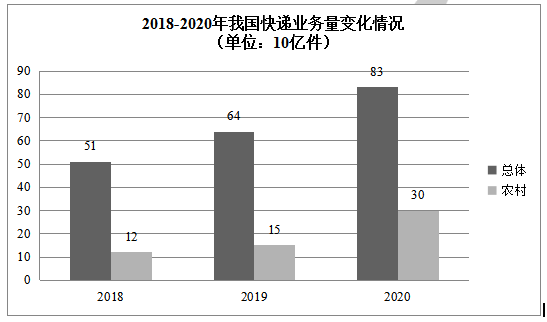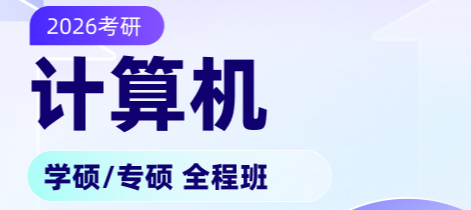1998-2022 ChinaKaoyan.com Network Studio. All Rights Reserved. 沪ICP备12018245号
2022考研英语二试题(完整版)部分
Section I Use of English
Directions:
Read the following text. Choose the best word(s) for each numbered blank and mark A, B, C or D on the ANSWER SHEET. (10 points)
Harlan Coben believes that if you’re a writer, you’ll find the time; and that if you can’t find the time, then writing isn’t a priority and you’re not a writer. For him, writing is a 1 job–a job like any other. He has 2 it with plumbing, pointing at that a plumber doesn’t wake up and say that he can’t work with pipes today.
3 , like most writers these days, you’re holiday down a job to pay the bills, it’s not 4 to find the time to write. But it’s not impossible. It requires determination and single-mindedness. 5 that most bestselling authors began writing when they were doing other things to earn a living. And today, even writers who are fairly 6 often have to do other work to 7 their writing income.
As Harlan Coben has suggested, it’s a 8 of priorities. To make writing a priority, you’ll have to 9 some of your day-to-day activities and some things you really enjoy. Depending on your 10 and your lifestyle, that might mean spending less time watching television or listening to music, though some people can write 11 they listen to music. You might have to 12 the amount of exercise or sport you do. You’ll have to make social media an 13 activity rather than a daily, time-consuming 14 . There’ll probably have to be less socializing with your friends and less time with your family. It’s a 15 learning curve, and it won’t always make you popular.
There’s just one thing you should try to keep at least some time for, 16 your writing–and that’s reading. Any writer needs to read as much and as widely as they can; it’s the one 17 supporter–something you can’t do without.
Time is finite. The older you get, the 18 it seems to go. We need to use it as carefully and as 19 as we can. That means prioritising our activities so that we spend most time on the things we really want to do. If you’re a writer, that means 20 writing.
1. [A] difficult [B] normal [C] steady [D] pleasant
2. [A] combined [B] compared [C] confused [D] confronted
3. [A] If [B] Though [C] Once [D] Unless
4. [A] enough [B] strange [C] wrong [D] easy
5. [A] Accept [B] Explain [C] Remember [D] Suppose
6. [A] well-known [B] well-advised [C] well-informed [D] well-chosen
7. [A] donate [B] generate [C] supplement [D] calculate
8. [A] cause [B] purpose [C] question [D] condition
9. [A] highlight [B] sacrifice [C] continue [D] explore
10. [A] relations [B] interests [C] memories [D] skills
11. [A] until [B] because [C] while [D] before
12. [A] put up with [B] make up for [C] hang on to [D] cut down on
13. [A] intelligent [B] occasional [C] intensive [D] emotional
14. [A] habit [B] test [C] decision [D] plan
15. [A] tough [B] gentle [C] rapid [D] funny
16. [A] in place of [B] in charge of [C] in response to [D] in addition to
17. [A] indispensable [B] innovative [C] invisible [D] instant
18. [A] duller [B] harder [C] quieter [D] quicker
19. [A] peacefully [B] generously [C] productively [D] gratefully
20 [A] at most [B] in turn [C] on average [D] above all
Section II Reading Comprehension
Part A
Directions:
Read the following four texts. Answer the questions after each text by choosing A, B, C or D. Mark your answers on the ANSWER SHEET. (40 points)
Text 3
We have all encountered them, in both our personal and professional lives. Think about the times you felt tricked or frustrated by a membership or subscription that had a seamless sign-up process but was later difficult to cancel. Something that should be simple and transparent can be complicated, intentionally or unintentionally, in ways that impair consumer choice. These are examples of dark patterns.
First coined in 2010 by user experience expert Harry Brignull, “dark patterns" is a catch-all term for practices that manipulate user interfaces to influence the decision-making ability of users. Brignull identifies 12 types of common dark patterns, ranging from misdirection and hidden costs to “roach motel”, where a user experience seems easy and intuitive at the start, but turns difficult when the user tries to get out.
In a 2019 study of 53,000 product pages and 11,000 websites, researchers found that about one in 10 employs these design practices. Though widely prevalent, the concept of dark patterns is still not well understood. Business and nonproft leaders should be aware of dark patterns and try to avoid the gray areas they engender.
Where is the line between ethical, persuasive design and dark patterns? Businesses should engage in conversations with IT, compliance, risk, and legal teams to review their privacy policy, and include in the discussion the customer/user experience designers and coders responsible for the company's user interface, as well as the marketers and advertisers responsible for sign-ups, checkout baskets, pricing, and promotions. Any or all these teams can play a role in creating or avoiding “digital deception.”
Lawmakers and regulators are slowly starting to address the ambiguity around dark patterns, most recently at the state level. In March, the California Attorney General announced the approval of additional regulations under the California Consumer Privacy Act (CCPA) that “ensure that consumers will not be confused or misled when seeking to exercise their data privacy rights.” The regulations aim to ban dark patterns- this means prohibiting companies from using "confusing language or unnecessary steps such as forcing them to click through multiple screens or listen to reasons why they shouldn’t opt out.”
As more states consider promulgating additional regulations, there is a need for greater accountability from within the business community. Dark patterns also can be addressed on a self-regulatory basis, but only if organizations hold themselves accountable, not just to legal requirements, but also to industry best practices and standard.
31. It can be learned from the first two paragraphs that dark patterns ______.
[A] improve user experiences
[B] leak user information for profit
[C] undermine users’ decision-making
[D] remind users of hidden costs
32. The 2019 study on dark patterns is mentioned to show ______.
[A] their major flaws
[B] their complex designs
[C] their severe damage
[D] their strong presence
33. To handle digital deception, businesses should ______.
[A] listen to customer feedback
[B] talk with relevant teams
[C] turn to independent agencies
[D] rely on professional training
34. The additional regulations under the CCPA are intended to ______.
[A] guide users through opt-out processes
[B] protect consumers from being tricked
[C] grant companies data privacy rights
[D] restrict access to problematic content
35. According to the last paragraph, a key to coping with dark patterns is ______.
[A] new legal requirements
[B] businesses' self-discipline
[C] strict regulatory standards
[D] consumers' safety awareness
Section III Translation
Directions:
Translate the following text into Chinese. Write your translation on the ANSWER SHEET. (15 points)
Although we try our best, sometimes our paintings rarely turn out as originally planned! Changes in the light, the limitations of your palette, and just plain old lack of experience and technique mean that what you start out trying to achieve sometimes doesn’t come to life the way that you expected.
Although this can be frustrating and disappointing, it turns out that this can actually be good for you! Unexpected results have two benefits: for starters, you pretty quickly learn to deal with disappointment, and in time (often through repeated error) to realise that when one door closes, another opens. You quickly learn to adapt and come up with creative solutions to the problems the painting presents, and this means that thinking outside the box becomes second nature to the painter!
Creative problem solving skills are incredibly useful in daily life, and mean you’re more likely to be able to quickly come up with a solution when a problem arises.
Section IV Writing
Part A
47. Directions:
Suppose you are planning a campus food festival. Write an email to the international students in your university to
1) introduce the food festival, and
2) invite them to participate.
You should write about 100 words on the ANSWER SHEET.
Do not use your own name in the email; use “Li Ming” instead. (10 points)
Part B
48. Directions:
Write an essay based on the chart below. In your writing, you should
1) interpret the chart, and
2) give your comments.
You should write about 150 words on the ANSWER SHEET. (15 points)

来源未注明“中国考研网\考研信息网”的资讯、文章等均为转载,本网站转载出于传递更多信息之目的,并不意味着赞同其观点或证实其内容的真实性,如涉及版权问题,请联系本站管理员予以更改或删除。如其他媒体、网站或个人从本网站下载使用,必须保留本网站注明的"稿件来源",并自负版权等法律责任。
来源注明“中国考研网”的文章,若需转载请联系管理员获得相应许可。
联系方式:chinakaoyankefu@163.com
- 2026考研英语全程班 6班
- 权威高配师资亲授技巧,教研千锤百炼科学提分。直录播课相结合精讲互动二合一,专业团队精细化作文批改。讲练结合,随学随练稳步提升。支持试听~
- 主讲团队:王江涛、谭剑波、董仲蠡、许聪杰、陈志超、潘赟、郑艳彤、易熙人

扫码关注
了解考研最新消息












